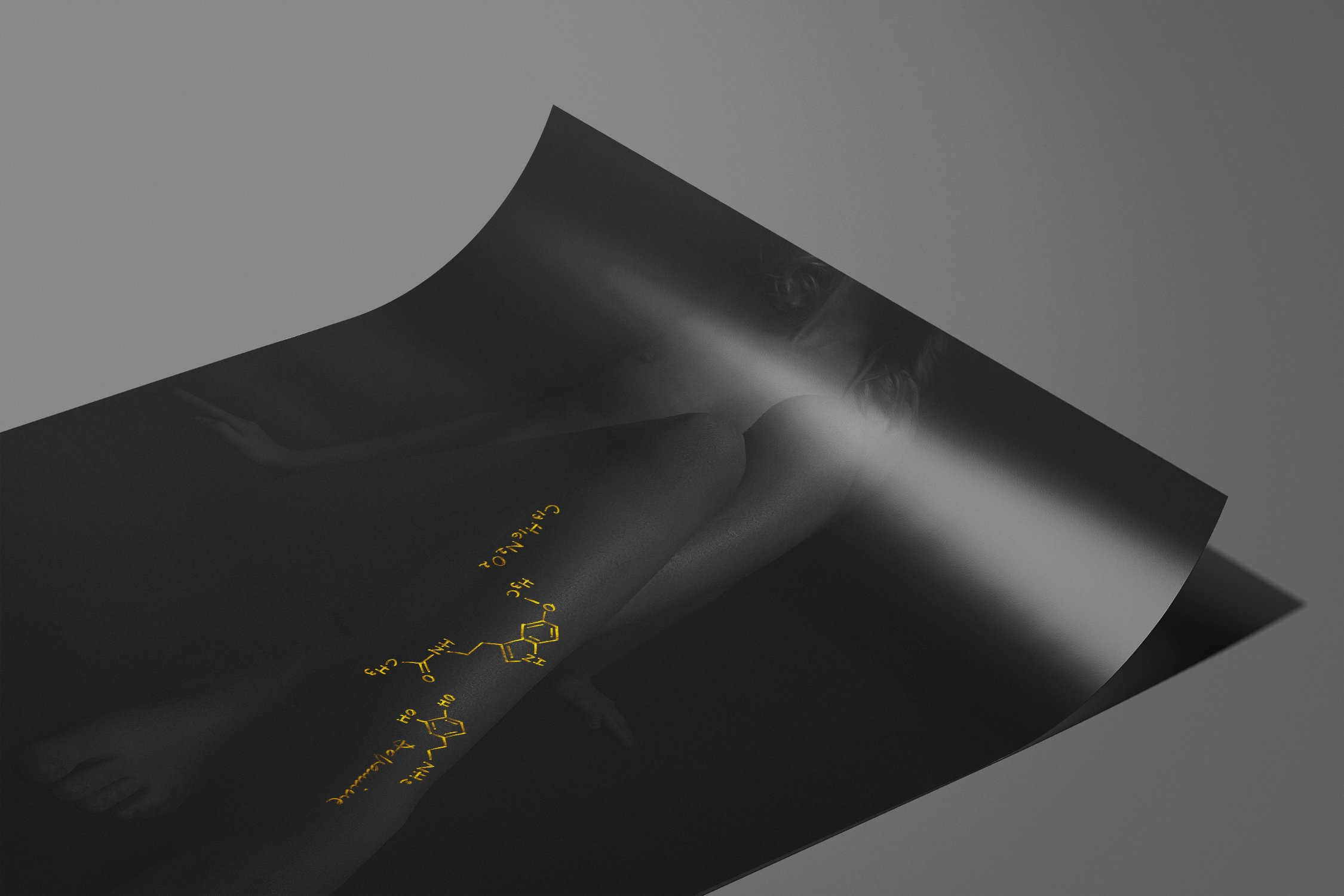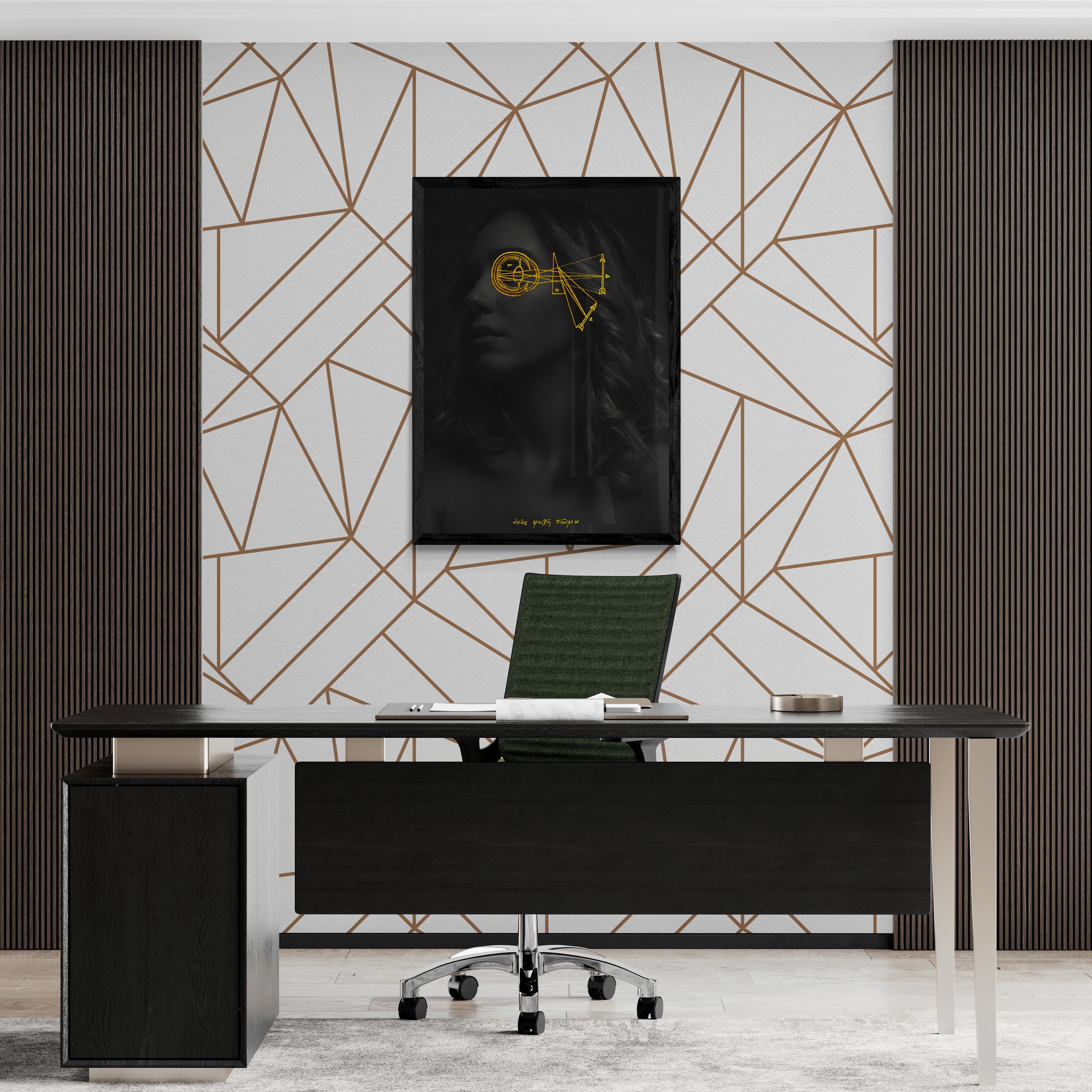Duja
Year: 2020
Artist: Artur Vives (golden graphics), Lídia Vives (photography)
Paper: FineArt Baryta Hahnemühle
Finish: silk/satin finish on a fine art heavyweight base of 315gsm
Technique: mixed, gold ink on paper.
Size: 90cm x 58cm (Unique work)
Year: 2020
Artist: Artur Vives (golden graphics), Lídia Vives (photography)
Paper: FineArt Baryta Hahnemühle
Finish: silk/satin finish on a fine art heavyweight base of 315gsm
Technique: mixed, gold ink on paper.
Size: 90cm x 58cm (Unique work)




Year: 2020
Artist: Artur Vives (golden graphics), Lídia Vives (photography)
Paper: FineArt Baryta Hahnemühle
Finish: silk/satin finish on a fine art heavyweight base of 315gsm
Technique: mixed, gold ink on paper.
Size: 90cm x 58cm (Unique work)
-
Lleida, November 2020. The award-winning Catalan visual artist Lídia Vives, presented her new series "Psyché", which is, so far, the most ambitious project of her career, and in which she addresses one of the themes that for years we have raised: what is the soul? Where is it located? And how can it be represented?
The photographer, together with the Spanish Gallery Fifty Dots, and her father, painter Arturo Vives, combines techniques in which the photographic elements represent the soma (body) and the writings or drawings, symbolize the psyche (soul) to approach the different theories about the “communication of substances” or how something immaterial like the soul can interact with something material, like the body.
In this way, human silhouettes appear in black, almost imperceptible, like X-rays, while texts, drawings, cartesian passages, chemical formulas and musical notations appear in golden pigment, in accordance with the Byzantine tradition to represent what is transcendent.
In addition, in its physical versions, they will be unique editions, resembling jewels, since each of the prints will be hand-operated with golden ink, as tradition dictates."Psyché" is inspired by various cultural references that relate this duality to chemical formulas associated with behavior and spirit; Plato's Phaedo; the Quaestiones Disputatae of Santo Tomás de Aquino; and Descartes's theory of the meeting of body and soul in the pineal gland.
Thus, this series is a pictorial reflection of the theories and attempts to reach an agreement on the location, definition and even conceptualization of the soul, inside and outside the body, on which the Catalan Lídia Vives was inspired by.
-
· XII Certamen Internacional de Fotografía Fundación ASISA, Finalist
-
Limited edition fine art prints for collectors and galleries.
Produced on baryta quality paper, all limited edition prints are signed and numbered by hand by the artist.
Each piece of artwork is accompanied by a Certificate of Authenticity.
Dimensions represent full paper size, including borders (2cm).
Prints are shipped unframed.
The artist reserves the right to produce up to two Artist Proofs for each artwork in addition to the edition sizes listed.
Tax is included in product prices.
Free shipping worldwide.
-
To ensure the longevity and optimal preservation of your artwork, please follow these detailed care instructions:
1. Handling
Use Gloves: Always handle the photograph with cotton gloves to avoid leaving grease or moisture marks. A pair of cotton gloves is included inside the package.
Avoid Direct Contact: Do not touch the photograph directly with your hands. Grease and moisture can deteriorate the surface of the print.
2. Storage
Controlled Environment: Store the artwork in a cool, dry place, preferably at a room temperature between 10ºC and 30ºC with a relative humidity between 49% and 60%.
Individual Protection: If you have purchased more than one photograph, never stack them without protection between each one. Place tissue paper or any other soft paper between them to avoid damage.
3. Display
Avoid Direct Sunlight: Do not expose the artwork to direct sunlight to prevent fading.
UV Protection: If you decide to display the artwork, ensure it is protected by glass or methacrylate with UV protection.
Frame Materials: If framing the artwork, use acid-free materials for the frame and mat. If the frame is made of wood and comes into direct contact with the photograph, it must be natural wood and unvarnished.
4. Adhesives and Mounting
Acid-Free Adhesives: Use acid-free adhesives to avoid yellow marks and deterioration of the support. Any other type of adhesive can cause long-term damage.
5. Additional Instructions
Unrolling from Tube: If the photograph was sent in a tube, do not attempt to roll it back up after unrolling. This can cause permanent damage.
Drawer Storage: If you choose to store the artwork rather than display it, do so in a drawer and protect it with tissue paper or another soft paper to prevent scratches and damage.
-
A pair of white cotton gloves and a personalized postcard.
The artwork is shipped flat or rolled in a tube depending on the size, well protected with bubble wrap.


















